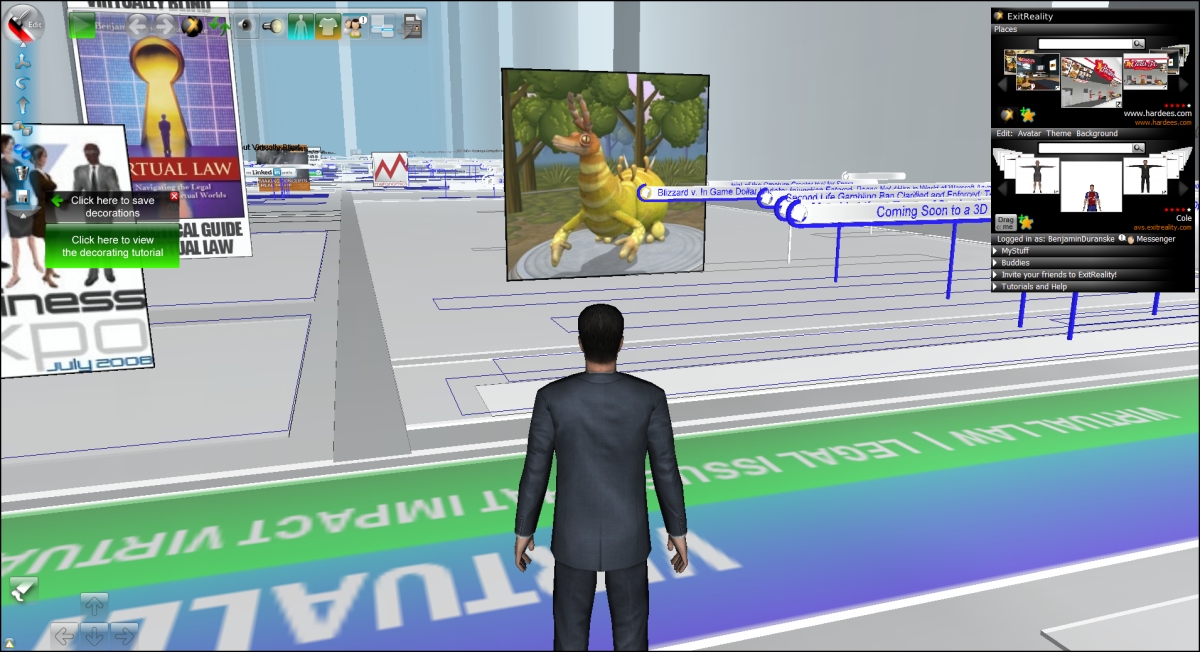The Web and virtual worlds have an uneasy marriage. Maybe the models are too new, or we’re trying to fit square pegs into round holes - or flat pages onto cubes, anyways. One motivation for this is that the Web is known. We’ve learned to surf it, and the content it contains SUITS a 2D environment - text, 2D photos, flat images - whatever, there’s no particular NEED to read a book in three dimensions, or a blog, whatever - and yet we sort of wish that the two would blend and merge and we’d all be one big happy family of ‘flat’ Web pages with embedded 3D rooms, or 3D rooms with embedded Web pages, or HTML on a prim, whatever.
See, we want to take advantage of the ubiquity of the Web, the ‘install base’, lessen the learning curve, so if only we could make the Web more 3D or make 3D contain more of the Web we’d be on our way, right?
But I’d propose that it’s still an uneasy marriage, because the tools for creating robust models for information sorting, retrieval and display in a virtual world setting are still so far from where they might end up that we’re only getting a vague glimpse of what’s possible.
The recent launch of Exit Reality was meant to help make that translation. And what you end up with are, well, giant screens and maybe some visual cues as to how the sites link to each other.

Image: Virtually Blind
What virtual worlds seem to offer, right now at least, is the option to have a sense of presence around or within ’static’ Web-driven content. So, add a 3D chat room to your blog, like Google’s Lively, or add Web pages to your 3D room - watch a youTube video with friends.
Where 3D leads us, however, isn’t the display of static screens or Web pages, but the extraction of the services from Web pages and the translation of content into meaningful models. Where time, conceptual connections, or location underpin information, virtual worlds can start to add value because those things might be more intuitive in a 3D space.
Some of the best examples of this, I think, are outside of virtual worlds. The visual thesaurus or Walk2Web give an idea of how a new value layer can be added on top of ‘flat’ content, and the addition of avatars and the ability to manipulate those objects towards creating new artefacts creates a hint at how information displays will increasingly shift into displays with multiple axes and a deeper possibility for social and collaborative interactions.





I think it’s time for a paradigm shift.
Not only in terms of that the relationship between 2D and 3D has to be explored but also how 1d (CLI) 2D, maybe 2.5D and 3D can go together. I thought there was an unholy ‘everything has to be graphic’ (what we call 2D now) in former times, and now we stick with it for no reason. That’s why I think that experiments like Goosh (http://goosh.org/ , sort of retro, I know) and Ubiquity are mandatory.
We sort of stick too much to ‘we went from 1D to 2D, now we have to move from 2D to 3D’ approach.